
INTERVIEW: How Bill Johnston discovered stereo vision at the age of 70
REMINDER: When reading on a desktop, you can have the article read to you by selecting the desired paragraph and clicking on the little speaker icon.
I first learned about Bill Johnston when, in early 2014, he posted this message in one of the amblyopia and strabismus Facebook groups.
With this short message he captured many strabismics’ interest and imagination. I contacted him and we have been in touch ever since. After having agreed to a short article about his head stands earlier, he has now also agreed to an interview. There is much to be learned from his experience and life, visually and otherwise.
MICHAEL: Hi, Bill! Thanks for wanting to do this interview! Who are you and where do you live?
BILL: My name is Bill Johnston. I was born on Noverember 16th, 1944. I grew up in New Castle, Pennsylvania but later my family moved to Michigan. I lived in Michigan for 37 years. During that time I had four sons. Two of my sons are married with children and live in New Mexico, where they had gone to college previously. The other two are back in Michigan. Towards the end of my working life, I moved to Santa Fe, New Mexico. This is where I live today. I very much enjoy spending time with my six grandchildren.
MICHAEL: Can you tell us a little bit about your visual history?
BILL: I have had different eye problems over the years: hyperopia, astigmatism, strabismus (crossed eyes), amblyopia (lazy eye) and then, later on in life, presbyopia, entropion, ptosis, and now cataracts. Entropion and ptosis are superficial eyelid conditions. I had them surgically repaired in the fall of 2013. I have worn eye correction for 64 years.
MICHAEL: Were you an exotrope (wall-eyed) or and esotrope (cross-eyed)? Did you ever have eye muscle surgery done?
BILL: Nowadays my eyes look more esotropic. In my baby pictures it was very exotropic. My left ‘lazy’ eye also points a little higher than the right. I never really paid that much attention to it and my doctors never communicated which kind of misalignement it was. No, I have never had strabismus surgery.
MICHAEL: Interesting evolution. The baby pic looks more eso to me though. Perhaps it changed rapidly when you were a young child. Also interesting that now you do have stereovision but still have the occasional misalignment as well. Were you seeing 3D when you took that recent picture?
BILL: Yes, I was seeing 3D. The only time the eye is suppressed is when I try to see fine detail as in reading. For seeing 3D, I feel like it’s more about the quality of the image going to the brain than in the misalignment. Is the image compatible with the image from the other eye? Or is it too distorted by, for instance, astigmatism? When looking with both eyes, I do have stereopsis. Sometimes an attempt to use both eyes and converge at reading distance is starting to occur too. Most often that attempt is not entirely successful and creates a visual mess and then I have to conscientiously suppress the bad eye.
This is a picture of when I was 17 years old. There too the left eye looks a little higher than the right one.
MICHAEL: Your strabismus is barely noticeable in that picture. Of course, that is unrelated to the severity of the amblyopia at the cortical level.
BILL: Maybe my amblyopia has been caused by my astigmatism rather than the strabismus, which seems to be mostly vertical. I really don’t know.
MICHAEL: Yes, in some cases it’s hard to say how it started. Once visual brain development is derailed by one or multiple visual impediments; be it hyperopia, astigmatism, strabismus or a combination of those; those problems become communicating sources. You have to address all of them appropriately to obtain synergy rather than a structural blockage or even implosion of the visual system. Was the strabismus and amblyopia ever treated in some way?
BILL: When I was still a little baby, my mother noticed a discrepancy in the alignment of my left eye and took me to the baby doctor to show him. The doctor examined me and said it was fine. I would outgrow it. When I was five I had to get a physical to enter school. The eye, ear, nose and throat doctor (archaic, huh?) discovered that I had a “lazy” eye and put a patch on my good eye to see if it could be corrected. It seemingly couldn’t and he referred me to an optometrist.
The optometrist said that I had a muscular problem and that I had to do eye exercises to correct it. According to me however, it wasn’t a muscular problem per se. It was uncorrected astigmatism distorting one of the eyes’ images so binocular fusion was impossible. Either way, for three years I went to exercise sessions, every Saturday during the school year and three days a week during the summer. To no avail. The doctor kept showing my father the improvements in the cheiroscopic drawings that I was making but, I presume, the fine motor muscles in my fingers were improving rather than my eye movements and binocular vision.
MICHAEL: I also do cheiroscopic drawings myself every so often. In my case, the improvements can only materialize by improved eye stability and eye movement. Without those my hands have nothing to base their movements upon and the drawings would remain shaky. Do you think it is possible there was some oculo-motor improvement but treatment was not complete enough to have a sensory and visual breakthrough? Motor and sensory development are intimately linked. Perhaps the practice of cheiroscopic drawing back then did lay some of the neurological foundation for what happened more than sixty years later when you did gain stereopsis?
BILL: The doctor would set me up with drawings to make and then close the door for an hour while he took care of other patients. The doctor told my father that my lazy eye had improved from 20/120 to 20/80 which may be true. But no cigar. The eye was still suppressed. I have the impression that I just got better at drawing the pictures, not necessarily at seeing better. I would very much like to see my childhood drawings but they are lost in the archives of time. My optometrist’s son retired from the practice more than ten years ago.
MICHAEL: Hmmm. Having a kid do the drawings on his own does not seem like a very considerate way of going about helping a child work through their visual and sensory issues. I look at VT as bio-engineering. The ‘expert’ has to figure out the weaknesses and sweet spots to further ‘engineer’ and ‘build’ a better visual system. When working with children, the overseeing adult is crucial. Making better drawings is a means to get to better visio-motor integration, not an end in itself. The practice of cheiroscopic drawing as only exercise, without broader sensory integration, and without an informed adult looking for particular points of weakness to be addressed is not likely to put sensory development back on track. You also need other kinds of stimulation to attain optimal sensory and visual integration in the brain.
Like me, you are a hyperope (farsighted) with astigmatism. I received glasses for these conditions which helped a little in improving eye position but, because of their delayed application and absence of further rehab efforts, did not fully restore eye alignment and binocular vision. The strabismus and a degree of amblyopia remained. Did the designated doctors ever try to correct the farsightedness and astigmatism with glasses to possibly facilitate binocular fusion?
BILL: The direct, literal translation of amblyopia from the Greek is “wandering eye.” I prefer that term. My eye was never “lazy”, it wanders. In my case, the corrective glasses that the doctors gave me might actually have shut down the amblyopic eye even more. When I was five, the optometrist put bifocal glasses on me with prism diopters for the strabismic astigmatic left eye. I continued to wear glasses like that until eight years ago (age 62) when I got my multifocal contacts. Glasses have a fixed focal center, each side related to the other, and my bad eye couldn’t find that center, so it just went out of focus and continued to lay dormant.
I didn’t realize this until I got contacts and immediately noticed that I was getting much more use out of that left eye. As I left the doctor’s office and walked up the street I immediately noticed that my bad eye was much more active – with no prism diopters. It was free to wander. Doctors don’t seem to know this. Their training does not emphasize this. No doctor ever put a lens on that stigmatized eye that corrected it in any meaningful way. Because of this, visual suppression stayed in place.
If you have additional focal distance problems (myopia, hyperopia) beyond or perhaps causing amblyopia, I definitely recommend contacts. They free up the wandering eye to wander. My current contention is that, if applied incorrectly, prisms freeze the misalignment into place and guarantee continued amblyopia. My vision never improved at all until I was freed of prism diopters.
MICHAEL: That’s a very interesting and valid point, even in modern days… When I went for my current glasses a little more than a year ago, I could finally align my eyes for the automated measurements they perform in order to manufacture the lenses. If you can’t align your eyes, or even more complicated, you alternate between both eyes, how do you get meaningful measurement values from that Essilor machine? They tell you to stand on a dot somewhere in the store and look at the machine but, in trying to do so, a strabismic will have looked with a certain eye from a certain distance. In strabismics, the angle of misalignment will sometimes vary depending on the task, time of day, etc… How will glasses manufactured based on the values from this one-eyed measurement interact with a dynamic and complexly alternating visual system? This is often even hard to predict in a two-eyed person so let alone in case of (alternating) strabismus.
Two years ago, I finally more or less understood the importance and function of binocular vision and asked the optician how the machine corrected for measurements of people who can not align their eyes. He shrugged his shoulders which, I guess, means that most likely it does not. Whether you are tested by a machine or a human, inconsideration for binocular function can result in a pair of glasses that does keep suppression in place. Likewise this can accidentally or purposefully, in case the vision professional is trained and skilled in binocular vision, result in a pair of glasses which DOES activate the second eye. This can be overwhelming without appropriate warning or advice.
Contacts, by their nature, take away some of the structural liabilities of glasses. Because they are attached to the surface of the eye, they have a couple of advantages: less optical distortion, a focal point that moves along with the eye, no aniseikonia, more peripheral vision, … These factors increased the activation of your wandering eye.
Doesn’t your prescription also include correction for astigmatism?
BILL: If they ever put anything in for the astigmatism they never said anything to me about it, and it certainly didn’t work. I am going to ask the doctor about that at my upcoming examination. My original optometrist who gave me the cheiroscope exercises only said that I had a muscular problem. I didn’t even know that I had an astigmatism until another doctor told me when I was almost 30.
MICHAEL: That’s really weird. So in your current glasses there is no correction for astigmatism at all? In mine there is correction but as my angle of astigmatism changes every 6 months and I can’t afford to change the lens of my glasses every six months, I haven’t adjusted it yet. I only really notice the astigmatism when he shows it to me during the examination. He tests it by showing me this target image while changing the lenses in his phoropter.
Then he keeps adjusting and asking ‘is this better or that better?’ etc… When the first one (a) has turned into the second one (b), we have found our prescription.
BILL: I am not familiar with that image at all.
MICHAEL: What’s your specific prescription?
I don’t really know what it all means.
MICHAEL: Aha, the last two numbers are the astigmatism correction: +0.25X090 and +0.25X116. You also have some astigmatism in the right eye. Once you mentioned you see the text sloping down when trying to read with your left eye. I have a hard time imagining that. Does it resemble any of these images?
BILL: I don’t really notice any distortions in my right eye, just my left eye.
The fourth or fifth images would be the closest.
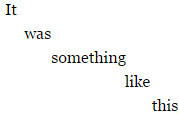 ,
,
only more distorted and crowded and the words weren’t so far below each other. But when the the lazy eye turned on the stair stepping was gone and only the crowding remains.
MICHAEL: Interesting how that suddenly disappeared. Crowding is indeed, or can be, one of the effects or symptoms of amblyopia. Maybe it’s a cortical thing rather than astigmatism?
BILL: I think that my amblyopia is caused by the astigmatism: the distortion in the curvature of the eyeball or, more specifically, the cornea so that the focus of the light doesn’t fall directly on the fovea. That’s cutting it with Ockham’s Razor: the best solution is probably the one with the least number of variables. I think that standing on my head woke up, toned, and strengthened my eye muscles so that they pulled out enough of the curvature of the eyeball to project a good enough image on the fovea to permit convergence. That is a better explanation than some mysterious, conjectural, and as yet unproven brain function.
MICHAEL: Well, now there is definitely brain change involved as well. At this point it’s an interaction between both but it’s interesting to think about what got ‘the ball roling.’ The process is being streamlined. We’ll get back to the astigmatism later on. You also mentioned a more recent onset of cataracts. How is that going?
BILL: I still have the cataracts and they are bad enough that I have to wear my multifocal contacts AND reading glasses to be able to read. In my case, cataracts is an aging thing like presbyopia. I happened to receive a card in the mail yesterday that says it’s time for my annual eye appointment. I will know more by the end of the month. I think however that Medicare has a set level of vision loss before they will permit the operation and they won’t care at all about the astigmatism or the newly developing eye teaming and convergence which I think is being obstructed by the cataracts. That is way over their bureaucratic government heads. If the ophthalmologist can find improvement in the bad eye, I might be able to convince him to try to approve the cataract surgery. At 70 I don’t want to be put on hold for another year. Anyway, I will find out pretty soon.
MICHAEL: My grandma had cataract surgery done recently. She has no binocular issues though so it’s different. It was minor for her. She just went in and had it done. I hope it will go well for you!
Did you ever have reading problems or did reading with one eye while having the other eye suppressed work well for you?
BILL: I never had reading problems, my good eye has always been correctable to 20/20 and I have been an inveterate reader all of my life. They tested me in the eight grade as reading at a post-college graduate level so I have been thinking on that plane ever since.
MICHAEL: That’s fortunate! It’s interesting how amblyopia and binocular vision problems can manifest themselves in different ways. Some are still better at sports, some are still better at reading but because of the incompleteness of our vision development things are fragile and limited. It shouldn’t necessarily have been one or the other and the level of performance in each of these areas, even our relative strengths, might be cranked up.
How were you with sports and other challenges
BILL: Having amblyopia and strabismus means that I couldn’t see 3D. I only saw two dimensions. I saw everything flat like you see a photograph. That means that my depth perception and my eye/hand coordination were poor.
I went out for Little League Baseball the first year that I was old enough and at the start the coach fanned us out in a semicircle in the near outfield and batted grounder balls to us. My grounder rolled across the grass and suddenly popped up right in front of me, hit me in my lazy eye, broke my glasses, which cut me beneath the eye and I had to go to the emergency room. That single grounder was the beginning and the end of my career in organized baseball.
So it went for a lifetime. I know all of the disappointments, discouragements, and sorrows that our condition brings and I thoroughly sympathize with each and everyone of you who is having adjustment problems. We all have a story to tell. That is why I love these internet amblyopia and strabismus forums. We all can relate to and learn from one another.
MICHAEL: Were you ever bullied? Did you somehow feel discriminated because of your lazy eye?
BILL: No, I wasn’t bullied, just made fun of. I wore glasses which were still made of highly breakable glass in those days. If a kid had broken my expensive glasses he would have been in serious trouble. His family would have been expected to pay for them. It was a fairly small community where everybody knew everybody. In that context, it was considered to be highly unfair to pick on a kid who couldn’t see well.
At one point, in the vision group, we discussed the importance of eye contact in interpersonal communications. Being strabismic, I do understand how difficult it can be. I was teased a lot by other children and developed a shyness about looking at peoples’ eyes, but eventually I overcame it. It’s important to teach children eye contact but you don’t have to be mean about it.
MICHAEL: What did you do after you finished high school?
BILL: My father was a tyrant who insisted on controlling my life. As soon as I turned 18, I joined the Air Force to escape him. At the induction physical exam to test my eyes, a medic handed me a card and told me to place it over one eye and read the last line I could see on the eye chart. So I placed it over my bad eye and read the bottom line. Then he told me to place the card over the other eye and read the last line I could see. I could only see the top two lines, but I repeated the letters that I had just read. By that time I pretty much had the eye chart memorized and I was in. I had another physical in basic training and the doctor prescribed glasses that I couldn’t see with at all.
I didn’t have another eye exam until after almost three years, when I was leaving for my last assignment. The doctor took one look at me, waved his finger in front of my eyes and said, “You have amblyopia. That means you’ve had it all of your life. How did you ever get in the Air Force?” I told him how I had cheated on the eye test. He finished his examination and asked me what I did in the Air Force and I told him that I listened to a radio. As I walked out of his examination room, he put his arm across my shoulders and said, “I really admire you. You have a lot of guts.” That episode from fifty years ago still evokes strong emotions in me today.
To be fair to my parents, I should add that they learned from their mistakes with their older kids and were better to my younger brother and sisters. They also became very good grandparents.
MICHAEL: What did you do after you left the Air Force? I once heard you mention you worked as a programmer for a while?
BILL: When I joined the Air Force, the recruiter promised me that I could be trained in electronics. I was hoping to have a trade to help pay my way through college when I got out. I wasn’t given electronics, instead I was conscripted into foreign languages and a fat lot of good that did me when I was discharged. I had to take whatever jobs I could find: construction, printing, pump and machine tool part repair, and other even more menial jobs. I wasn’t competitive at any of the manual skills because of my lack of depth perception. I did manage to get a few years of college in but never graduated. Finally I went to computer programming school and got a fairly good job.
When my father died and left my 84 year old mother living alone for the first time in her life and suffering from Parkinson’s disease, I quit my job and went home to take care of her. When later she fell and broke her hip, the doctors put her in a nursing home so I came to New Mexico to be with my sons and grandchildren. At 60 years old and no special skills, the only job I could find here was as a drugstore clerk. There isn’t any manufacturing industry in New Mexico. That requires an easily accessible source of water. So in the end, I had to retire from a McJob.
MICHAEL: Phew… That’s tough stuff, Bill. All I can say is that you SO deserve your newly developed stereo vision!!! I hope you have a happy retirement with your sons and grandchildren!
BILL: The grandkids are a blast. Four boys and two girls, ages ranging between 9 months and 10 years. I have a lot of fun being with them and observing them grow, develop and learn.
MICHAEL: We have discussed optics but where would you say the evolution towards your current 3D vision really began? From what I understand you weren’t even looking to improve your vision or gain stereopsis.
Amblyopia, muscle tone and general body coordination and posture
BILL: Eleven years ago, one of my sons gave me a book entitled “Pain Free” by Pete Egoscue. It is about joint alignment and exercises we can do to relieve resultant muscular pain. The body has an equal set of bones and muscles on each side and, ideally, they need to be in bilateral alignment for us to eliminate muscular pain. A lot of this pain is written off by doctors as arthritis even though it really isn’t in the bones or cartilage, but in the muscles. Nevertheless it can actually be in the joints because the misaligned joints have worn through the cartilage and there is painful bone on bone contact.
Very quickly I identified the misalignments in my body. While I had always thought that my left leg was shorter than my right, I discovered that actually my right hip is higher than the left. My right knee joint is twisted which shoves the hip higher. My feet are not equal and my right shoulder is rolled forward. This has caused me some pain but I followed the exercises and within three months I was pain free. The exercises worked. I diligently did them for ten years. They were supposed to eventually wake up dormant muscles that would pull my bones into their proper joint positions. That didn’t happen although I do remain pain free.
Then, as mentioned before, I discovered that standing on my head for two minutes did more to wake up my muscles than fifteen minutes of the Egoscue exercises. I started standing on my head every morning two years ago. My yoga instructor said it would clear the sinuses which is true. I quickly discovered that it also digs all through my body and wakes up and tones all of my muscles. It makes me feel good all over so I continued.
Then a miracle happened. On December 2nd, 2013, Matt took the kids and me to a natural history museum and we watched a movie in digital 3D. For the first time in my 69 years I saw 3D! I could see it! It was very beautiful.
On New Year’s Day, 2014, my lazy eye turned on permanently in real life! I had constant depth perception for the first time in my life. Everything just popped up out of the flatness that I had always seen. It is wonderful. I can fully appreciate now what I, and you, have been missing. I would be 70 years old in a few months.
My point is this: although eye doctors only look at eyes, the whole body is an interrelated system of bones and muscles that work together, and does joint misalignment affect the alignment of our eyes in any way? Probably. I have noticed that some of us have problems with our balance, including me. Is this really due to our bad eyes or is it due to joint misalignment or bad posture? That said, standing on your head isn’t for everybody. I would hate to feel responsible for a broken neck.
MICHAEL: That is very interesting and fascinating! It’s also consistent with what I have experienced, learned and thought on the subject so far. In an earlier article on your unanticipated discovery, I mentioned the importance of mixing up visual input, balance (vestibular sense) and proprioception. Proprioception is the awareness we have of our own body, limbs and eyes for that matter, also called body sense, and sometimes referred to as our ‘body maps’ in the brain.
Recently I read a very nice article about proprioception. Proper movement requires proper maps. Inaccurate body maps in the brain can cause pain and pain in turn diminishes the accuracy of our cortical body maps because it thrumps proprioceptive signals to the brain. Becoming pain free might have improved your body mapping which might have improved your posture, including eye posture. This in turn will have improved your motor, sensory and visual experience and processing.
With your contacts you have improved your visual input and partly your ocular motility, then you worked on proprioception and general body posture through Egoscue exercises and ultimately combined balance, proprioception and visual input through this specific yoga exercise of standing on your head every day. The body is a complex, interrelated system. Motor systems do not work independently of each other or from sensory systems. You involuntarily created the right circumstances for stereovision recovery to take place. Technically speaking it wasn’t even a recovery but a discovery because you’ve never had it before!
BILL: I liked the article you mentioned. I have been exploring the meaning of proprioception. I guess I could start paying attention to the awareness of my body parts placement while I’m standing on my head too. No extra work to that, just awareness.
I do have a theory that whole-body symmetry is what our goal should be, the muscles on each side being exact mirrors of the other side. I haven’t made enough progress yet to be adamant about it though.
MICHAEL: Your story and observations also remind me of something I read in a book I reviewed recently.
“We will see in later discussions that these brain pathways that connect our senses can happen on the same side of the brain, or hemisphere, and these are called ispilateral connections. These connections can also project to the other hemisphere, and these are called contralateral connections. This distinction is very important for more advanced motor and sensory functions, such as athletics, and playing piano where coordination between the two sides of the body are obviously critical. This is also the case in less obvious situations, such as speaking, or reading, where the brain must be able to calculate spatial relations between both sides of the body in order to accurately direct the eyes to scan lines of text back and forth across the vertical midline (the imaginary line that runs between the eyes and splits the face into two equal halves, left and right). This requires rapid and coordinated ‘role/load switching’ between the two hemispheres of the brain.” – Charles Boulet
Good communication and balance between both sides of the brain and body are very important for smooth motor and sensory functioning.
BILL: That’s interesting. The brain can only process the sensory input that it gets. When it does not get a certain input, brain plasticity will respond to that and ‘look at’ different allocations for those neurons for the organism to get by as well as possible. For instance my left ear, on the lazy eye side, has always had stronger hearing than the other side. I believe it is my brain’s compensation for the deficient visual input.
I feel as if my lazy eye turned on because standing on my head increased the eye muscle activity and strength, just as it does for the muscles in the rest of my body. My astigmatism is caused by abnormal curvatures of the cornea on the eyeball. Eyeballs want to be round and the activated muscles rounded out the eyeball enough for it to project an image that is close enough to the other eye to permit the images to merge. I know objectively that the image improved because when I used to look at a line of print the words would always stair step down to the right. That stair stepping is gone now and the line of words is straight. A definite observable improvement in the astigmatism. The optical neural passageways were healthy and open for business. The receptor areas in the brain were healthy too, just waiting to receive an assimilable image from the wandering eye.
That is my current hypothesis and hopefully, as I continue my exercise, my astigmatism will continue to improve. I have added eye exercises while standing on my head, moving my eyes to their extreme positions: up and down, left and right, near and far. I just keep them moving the whole time. We will see.
MICHAEL: The angle of my astigmatism varies every six months too. I don’t know what to make of that yet.
Then, halfway into March, my always hard-working “lazy” eye came into focus. I can see the 20/10 line as clearly as I can with the good eye. The astigmatism still causes some distortion but the focus is there and the lights at night are not as blurry. That hasn’t ever happened before that I can remember. My depth perception seems to have improved too. I’ll take it! I will have to wait until my annual eye exam this month for my ophthalmologist to confirm this.
Now, what happened? Does standing on my head every morning continue to strengthen the eye muscles and improve the astigmatism, finally focusing the light directly on the fovea? Or is my brain’s neuroplasticity adapting to the new image it began receiving when the eye turned on more than a year ago? I don’t think that I can ever know the answer to that. Nevertheless I hope and pray that the eye will continue to improve until it becomes as strong as the dominant eye. I do know the activities I have done that I believe have caused the improvements so I shall continue.
MICHAEL: On April 9th, 2015, you reported another new and delightful phenomenon had occurred in your vision. This might give us a clue as to what happened in your brain.
Your account of visualization makes me very hopeful. My experiences as a child, before the double vision and surgeries, corresponds with your earlier description. I could do it when having a piece of paper in front of me but not without. Now I’m still largely working on motor and sensory skills but I think better visualisation is possible for me too once I have attended to the basics. The future is bright!
Can you describe how it feels to gain depth after 69 years of flatness?
BILL: It isn’t anything like I ever imagined it to be. I’d say the eyes share 80% of their visual field, that leaves only 10% on the outside periphery of each eye. As far as the width of the visual field goes, I wasn’t missing much. That difference is there but it’s very subtle. Notwithstanding, depth perception is an entirely new dimension! The product of proper eye teaming is an exponent of its parts.
I have frequently been asked what 3D vision looks like since my lazy eye turned on and I still don’t have a good explanation. Could you explain good hearing to a hard-of-hearing person? How would you describe color to someone blind from birth? Technically, having depth perception, isn’t it seeing things from two directions at the same time? When you first start having depth perception, it is like you start having a three dimensional soul, too, for the first time. It’s kind of a philosophical question, like a little kid asking,”Is it tomorrow yet?”
Telling him about my experience, I posed these questions to my son, the philosophy major. While he really doesn’t answer everything, his comments are worth repeating. Try this on for a size: gaining depth perception is like having lived under a dictatorial regime for your entire life and then suddenly being released into a free society. You were aware that there was more than one way of looking at each person and problem but the whole society, its institutions and people, had been oriented to show it to you from only one direction. Now you’re released into a society where people are permitted to consider, simultaneously, the advantages and disadvantages of various points of view. Now you “see” that your old regime hadn’t presented an entirely inaccurate picture of the world, people and their intentions but the flatness of its presentation had hid the nuances and possibilities.
In the end, all I can say about acquiring 3D is that it’s wonderful. Like most of us in the group I really do feel cheated and now I get a few years as I am aging to be able to see almost normally. In a way I feel like an infant exploring the world of real vision for the first time.
MICHAEL: Talking about exploring the world… I loved your February 8th, 2015, post about binoculars.
MICHAEL: It hopefully will change the way vision treated. Right now there’s only a very, very small fraction of eye doctor understanding these links.
BILL: That’s too true. I personally have never had an eye doctor who had a clue. I believe that change will come when their schools start teaching the new techniques. But first, the schools themselves have to get a clue.
MICHAEL: Over time I have seen various frustrated posts of yours about eye doctors and the quality of their eye exams. To me too it seems that to the majority of eye doctors amblyopia is not something to be taken seriously. The stories of medical ignorance, and consequent negligence, I get to hear from people are incredible. Those stories are the rule rather than the exception. Physical health of the eyes is obviously important but what good are healthy eyes if your brain is not using them correctly? Proper detection and functional treatment of amblyopia can make all the difference to someone’s life. Vision exams are only valuable and successful if an eye doctor knows how vision works as a whole. Then they will know what to look and ask for. Generally though that’s wishful thinking.
BILL: I have defined the crux of our problem. I have been to two eye doctors, an optometrist and an ophthalmologist, since my lazy eye turned on. Neither one was interested! They go through their motions, do what they do, give me prescriptions and charge me money. They just don’t care. Since the cheiroscopic drawings I did sixty years ago, doctors have just been indifferent about my condition. These are the people we go to for help and what do they do? Nothing. I thought my Air Force story is a great example of the general quality of optical examinations. I was in for two and a half years before they even discovered my amblyopia.
I’m especially concerned about school children whose convergence insufficiencies are overlooked by doctors and then they have “learning” disabilities and are turned over to psychologists who put them on drugs. I don’t know about other countries but that’s what’s happening here. Both the American College of Ophthalmology and the American College of Pediatrics deny vision therapy is effective and have denounced vision therapy as having no scientific basis.
Before I joined the vision group, I had never even heard of a Vision Therapy Doctor of Optometry (VTOD). When I talk about eye doctors, I mean the conventional optometrists and ophthalmologists that I have had all my life. I do not mean VTODs. I have no personal experience with VTODs but when I first started posting in our group, VTODs indicated that they are very knowledgeable about the interrelationships between the eyes and the rest of the body. Conventional eye doctors don’t seem to look beyond the eyes themselves.
Even getting a mere prescription seems to be a hassle. I have received six prescriptions for trifocal glasses during the last eight years. No two of them are the same. Not even for my good eye! Finally this last ophthalmologist reproduced the same prescription that I have been wearing for the last 22 years. Lately I have spent at least a thousand dollars on these people for examinations and all I have received is trifle. Meanwhile I have been wearing the same contacts the whole time with great success. No problem. They do renew my contact prescription correctly because I carry it in and show it to them. Unfortunately, they won’t give me the prescription until I have ordered new contacts through them, for double the price that I pay on the internet. Aargh!
To be more kind to doctors, always remember that 50% of them graduated in the bottom half of their class. Perhaps our expectations of them are really too high. In the land of the blind the one-eyed man is king. The blind being the people with normal binocular vision. We have to help ourselves.
MICHAEL: Maybe it does take one to know one, as they say… Yes, the general approach to this problem is appalling: patching, pills and surgery. I feel a sense of urgency is missing. In the end, eye doctors are living comfortably while the strabs and amblyopes are paying with their lives. Some doing better than others but generally the studies about delinquency and socio-economic problems among people with functional vision problems don’t show a pretty picture. There’s definitely a role to be played here for amblyopes and strabismics by associating themselves.
I’m always very impressed with how older amblyopes have adjusted throughout their life. I don’t think I would have coped without finding out the truth on the internet. Do you have any advice for amblyopes and strabismics out there?
BILL: You are right, older amblyopes have learned to adjust. I will tell you this: you have to do it alone, no one is going to help you. There is a very great loneliness involved with having a lazy eye. Do not despair, you have other talents that are as good or better than others. Do NOT define yourself by the lazy eye. A disability is only one aspect of the whole person and we cannot identify the person solely by the disability, especially not ourselves. Many others have disabilities that hamper them too. We all have our limitations and our talents and we do the best we can. That is true of everybody, not just us. Nonetheless, without casting myself into a pity pool, I do appreciate the opportunity to vent my frustrations to a group of people who understand.
I really think that my lazy eye turning on was the miracle that I had been praying for, standing on my head was just the vehicle. Now, during my eighth decade on this planet, for the first time in my life I actually have hope that my eye can be fully cured. There’s always hope!
If you think this was informative and feel it is important to get these stories out there, consider supporting Strabismus World.
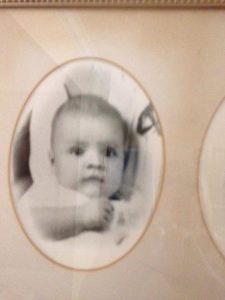


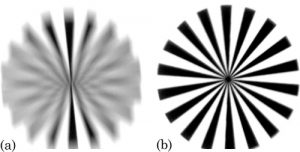
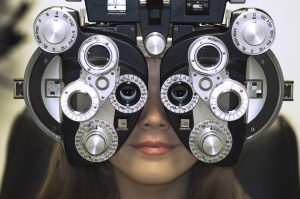

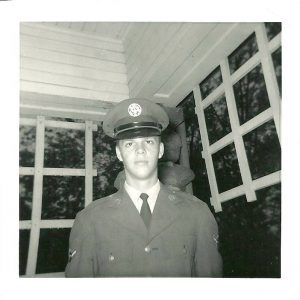
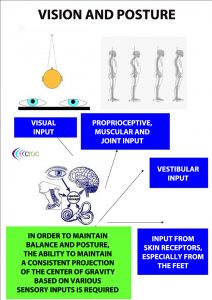
Wauh! this is like a 3D movies on itself
it should be a base line in information for us eye care practitioner to learn and change our attitude. All the best Mr bill
Wauh! its amazing in African patient are not a where and not inquisitive about their conditions
I am an optometrist who will graduate year from bsc program. I wish to further my studies in the area of squints and binocular vision and occupational optometry please link me to where I can be helped. I am the best in my class, our university is the only institution offering optometry training in the east Africa region, we will be the second group to graduate
I have had 4 surgery one eye and 2 on other. After my 3rd op I experienced binocular vision for the 1st time at 50 years old! WOW! A tree trunk just amazed me. All I wanted to be is outside, After 2 weeks everything went wrong. Double vision straight on. Had to wear patch. A reop was done where it was found to have been miss stitched and they put it together the best they could. Now I have double vision on right gaze because my right eye goes farther than my left. and no binocular vision. They want to do another surgery but I worry.
Hi Shelly!
Quite a story! What a teaser! 2 weeks of stereo vision and then losing it again. I would not revert to another surgery again but would check out vision rehab options. You clearly have the ability to see 3D so better acquire it without further damage or risk.
I would very much like to invite you to our ‘DIY Vision Therapy’ group on Facebook to exchange ideas and experiences with other strabs and some professionals.
Hope to see you there!
Michael
Michael
Dr Del Monte says my vision can not be corrected with vision therapy, only surgery. My insurance does not cover vision therapy. It sure would be nice to see a tree again!!! Dr does not feel this is possible after the botched surgery. He feels he could correct the right gaze. Thank you so much for your response!
I don’t feel that advice or statement from your Doc is entirely accurate. It may be true a surgery is needed to partly correct the previous surgery but you may still benefit from learning about VT with or without a surgery. Ophthalmologists sometimes tend to be rather biased towards surgery.
Either way, it never hurts to inform yourself more fully! I found your comment so interesting I already posted it in our FB group. Responses were quick to follow.
Here is the link: https://www.facebook.com/groups/diyvisiontherapy/.
Michael
Michael
Sorry I removed myself from your group. This information was going on my home page.
That’s too bad! You’d better remove that group box from your profile than yourself from the group. 🙂 Anyway, I hope you find the information you need. This blog has a lot of it. Also check the links page to find other resources. Do certainly read or listen to the book ‘Fixing My Gaze’ by Susan Barry.
Michael
I listened to a half hour interview with Susan Barry. OMG she mentioned trees!!! I kicked myself for not going to the Grand Canyon while I had my vision, I guess that was not bad because the heights scared her! What I have learned today is the double vision/visual confusion at right gaze and the hope of regaining stereo vision may actually be two separate issues I need to address. And maybe A Developmental Opthamoligist would be a start. Which I have never heard of. Thank you so much for giving me hope!!!!
Glad you found some info you can relate to! 🙂
I do think they are related issues. Either way, an evaluation by a developmental optometrist would be a good place to start indeed.
Good luck!
This is very interesting to me. I just happened upon your website. Is there any way I can contact Bill Johnston? He and I were roommates in the Air Force. Thank you!
Tom Sherry
pgachar@bellsouth.net
This interview is so full of new (for me) information and possibilities, not to mention how great it is to know I’m not the only one to have this experience! THANK YOU!! I gained stereopsis at age 62 after watching a 3D movie. I did my best to ‘observe’ the moment in a blog post:
http://mystickidplanetearth.blogspot.com/2016/08/going-beyond.html